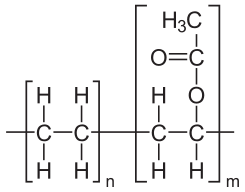CFPP BOOST; ADDITIVE DOSAGE AND EFFECT
Additives used in Europe to improve fuel operability at low temperatures are based on copolymers of ethylene and vinyl acetate (EVA). As crystals of n-paraffin wax form on cooling, the polymer co-crystallises and disrupts crystal growth. The effect is to enhance filtration in engine fuel systems, and for moderate dosages of the polymers, a boost to operability of over 10 degrees Celsius is achieved. This is a highly profitable and effective additive for refiners.
The dosage of the additives required is proportional to the amount of wax forming and can be correlated from the fuel distillation profile and overall n-paraffin content. Narrow distillation profile blends based on feed high in n-paraffins have the greater crystallisation of wax.
The Additives.xlsm spreadsheet correlates the fuel character and required additive dosages to achieve the EN-590 Cold Filter Plugging Point (CFPP) specification.
Narrow distillation fuels high in n-paraffin can fail the CFPP specification and need re-blending to be feasible. High boiling blends, and cracked components require more crystalline EVA polymers. The download helps identify difficult blends and the correct additive selection for optimum results.

Ethylene & Vinyl Acetate Co-Polymer.
The polymers are linear, with alkane segments (from the ethylene) between vinyl acetate units. The factor n is typically 6 to 8 in commercial products with longer alkane segments exhibiting increased crystallinity and effective interaction with longer chain n-paraffin. An alkane segment several carbon numbers less than the n-paraffins crystallising from the fuel is found to give the optimum effect.
Produced by high pressure polymerisation, the polymers are ‘statistical’ having a distribution of molecular weights, monomer contents and positions. The ratio of the number average and weight average molecular weights defines the polydispersity or variance factor of the polymer. Higher polydispersities give an interaction with a wider range of n-paraffins.